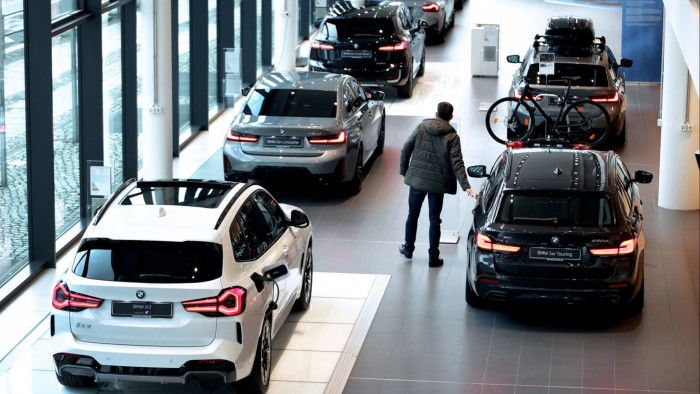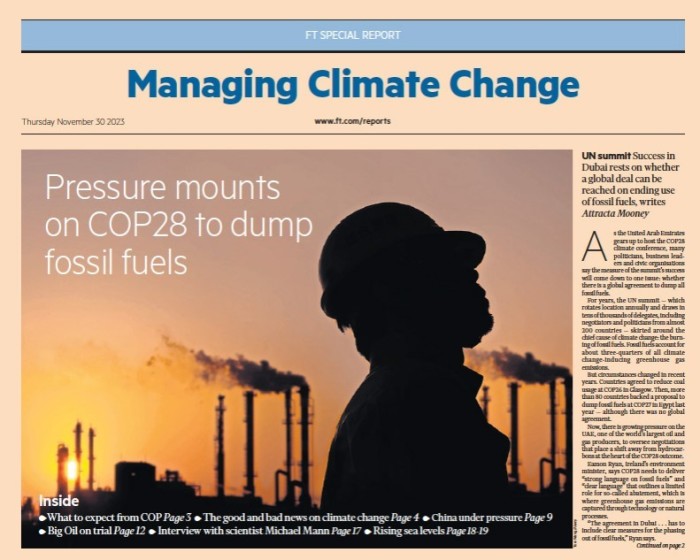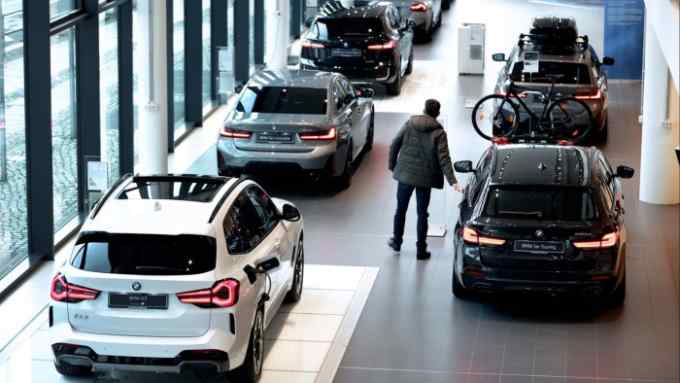Cost and infrastructure concerns hold back electric vehicle growth

Simply sign up to the Electric vehicles myFT Digest -- delivered directly to your inbox.
For months, the Ford dealership in the North Hills neighbourhood of Los Angeles sold the electric Mustang Mach-E at a mark-up, citing huge demand. Today, more than 100 of the battery models sit on its lot, waiting for buyers.
Down the road, the rival Kia dealership is offering money off its new battery vehicles, while the neighbourhood’s Mercedes-Benz outlet has phoned around potential customers to advertise its new, more generous financing offer on electric cars.
From California to the UK and Germany, discounts are creeping into a segment that was previously such a hotbed of activity that customers had to wait months to take delivery of their cars.
The electric vehicle (EV) market is still growing, with each month breaking new sales records. However, the pace of growth has slowed, as eager early buyers give way to a more sceptical mass market. The result is a significant challenge for an industry that is racing to decarbonise in order to hit emissions targets.
“The challenge for us is that we are moving from a category of early adopters,” says Luca de Meo, chief executive of French carmaker Renault, which is preparing a launch of affordable EVs in Europe. “They have the money, it’s cool to buy a Tesla or a new Chinese whatever, and they can change in six months. It’s a niche of the market. But, if we want to move to 30, 40, 50 per cent of the mix, we need to attack the mass market.”

This article is part of an FT special report on Managing Climate Change
Despite a flurry of new products, though, efforts to sell EVs to mainstream buyers have faltered. Rising prices and interest rates have made it harder for EVs, which are generally more expensive than internal combustion cars, to win over new customers. Among their well-documented concerns is the inadequacy of the charging infrastructure.
But another significant reason for slowing demand is the coolness towards the sector shown by governments that once proudly promoted EV technology.
Two years ago, at the COP26 climate summit in Glasgow, countries, cities and carmakers signed a pledge to phase out sales of new non-zero emission vehicles by 2040. The agreement was spearheaded by the UK hosts and signed by more than 30 countries, including Chile and the Netherlands, and almost 40 cities or states, including New York, California and São Paulo.
However, two years later, as global climate delegations prepare to travel to Dubai for the COP28 summit, some of the same voices are sounding caution on the technology they championed.
Nowhere is this seen more poignantly than in the UK, which has pushed back the end-date for the sale of new combustion-engined cars from 2030 to 2035. Even though interim sales targets will still propel the EV sector to account for the government target of 80 per cent of sales by the end of the decade, the message it sent to consumers was they can wait for another five years.
“There was a bit of disappointment on the backtracking of the public narrative,” says Sandra Roling, director of transport at the Climate Group, a non-governmental organisation that helped draft the original Transport Pledge from COP26. “It is important to stay the course.” She says the main impact of the rollback was “confusion for everyone, for consumers, for businesses”.
Even so, business buyers — which, in advanced markets such as the UK, account for more than half of sales — are still driving significant adoption of EVs, she says.
Carmakers are also expecting EV sales to continue to rise steadily. “We are confident in the UK remaining a lead market, that is at least faster than the average,” says Thomas Becker, who leads sustainabilityat German group BMW, which owns the UK’s Mini and Rolls-Royce brands.
He believes that — after Europe’s standout leader in EV adoption, Norway, and the Netherlands — “of the big European markets, the UK is faster”. BMW expects a “steady continuation” of the rising EV interest it has seen, led by the Mini brand, which will turn fully electric this decade.
But, like others in the industry, the company still believes a widescale expansion of the charging infrastructure is needed to allay motorists’ worries about running out of battery power or being forced to queue for a charging point. “Charging has to grow with the fleet — this really is decisive,” Becker says. “You cannot just say the job is done.”
Attracting investors into charging is still difficult, with the nascent market offering poor returns. According to Vittorio Carelli, an analyst at rating agency Fitch, the EV industry is stuck in a “vicious cycle”, with motorists put off by the apparent lack of chargers, and charging operators put off by the relatively low numbers of EVs on the road.
“There is no money if the development of the asset infrastructure does not provide a sufficient amount of return,” he argues.
A “complete lack of historical data” on a range of issues — from charging locations to the best utilisation rate to maximise profit while not keeping motorists waiting — is holding back investment, Carelli suggests. The best case for investors, he adds, is to treat charging businesses as unprofitable but with tremendous potential.
Some charging companies, such as Chargepoint and Allego, and large operators, such as Tesla are now ramping up their installations.
And, for all the political headwinds, carmakers — as they face tightening emissions rules — still expect the road to EVs to be a one-way street. “At the end of the day, governments are going to do what governments are going to do,” says Jim Rowan, chief executive of Volvo Cars. “We have got to run our own race.”

Comments